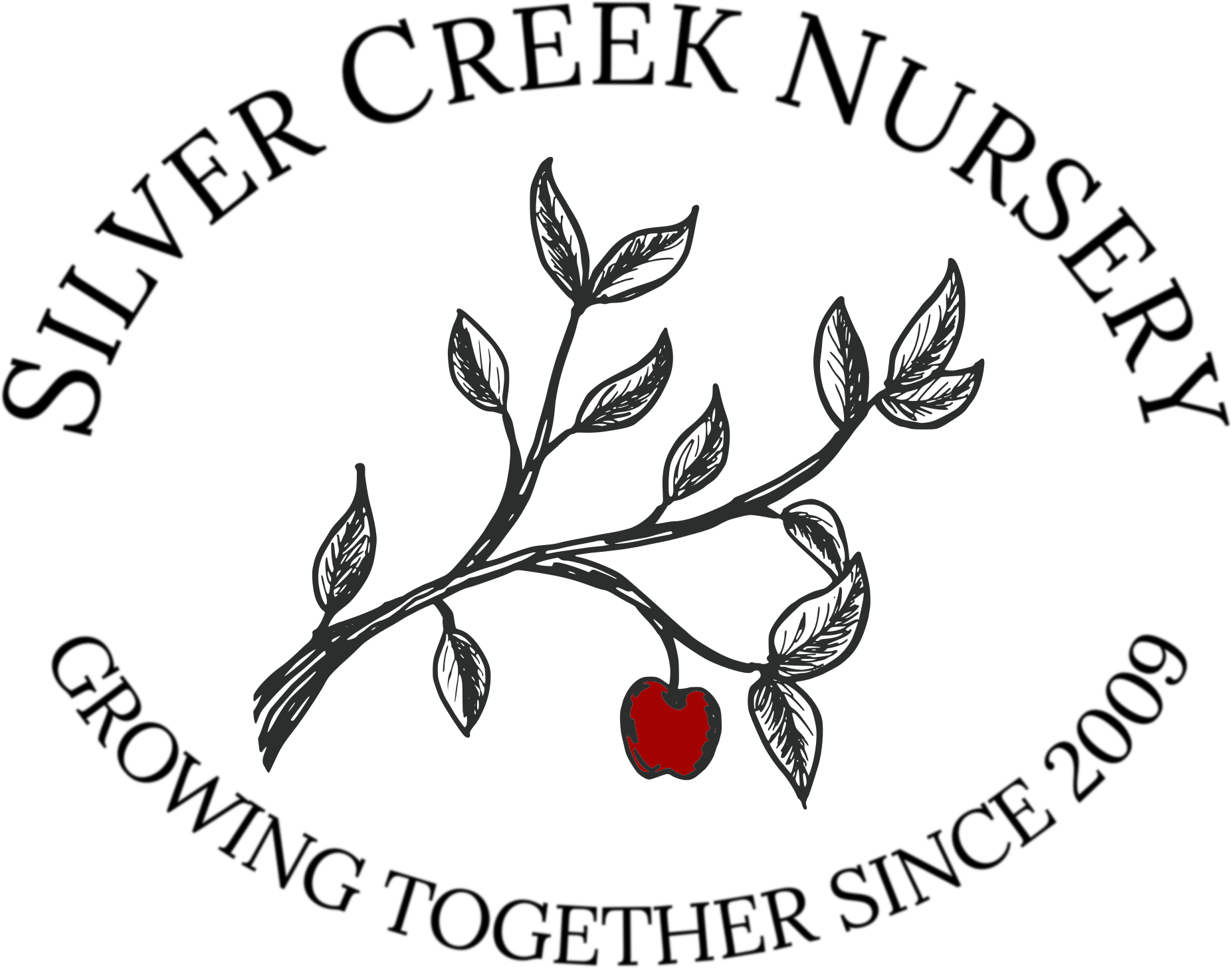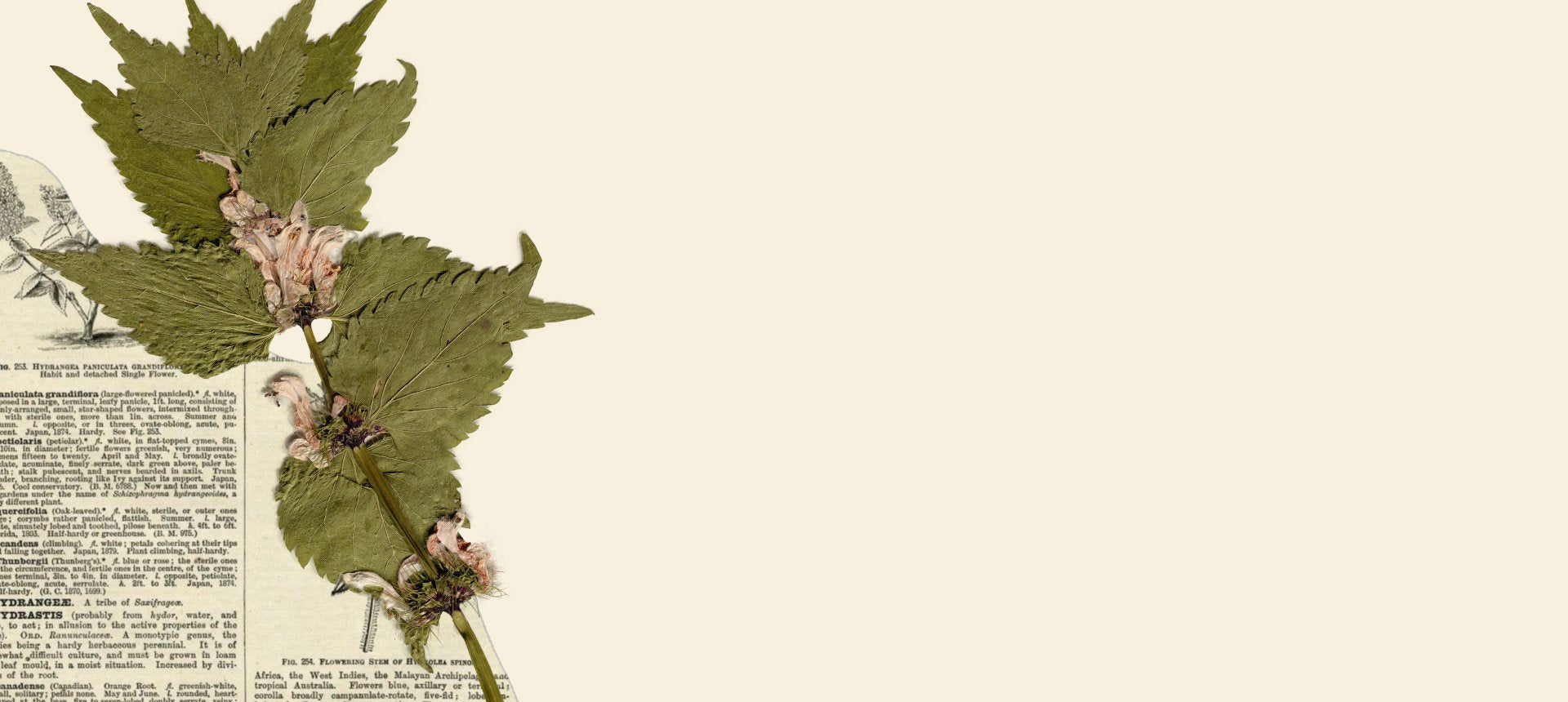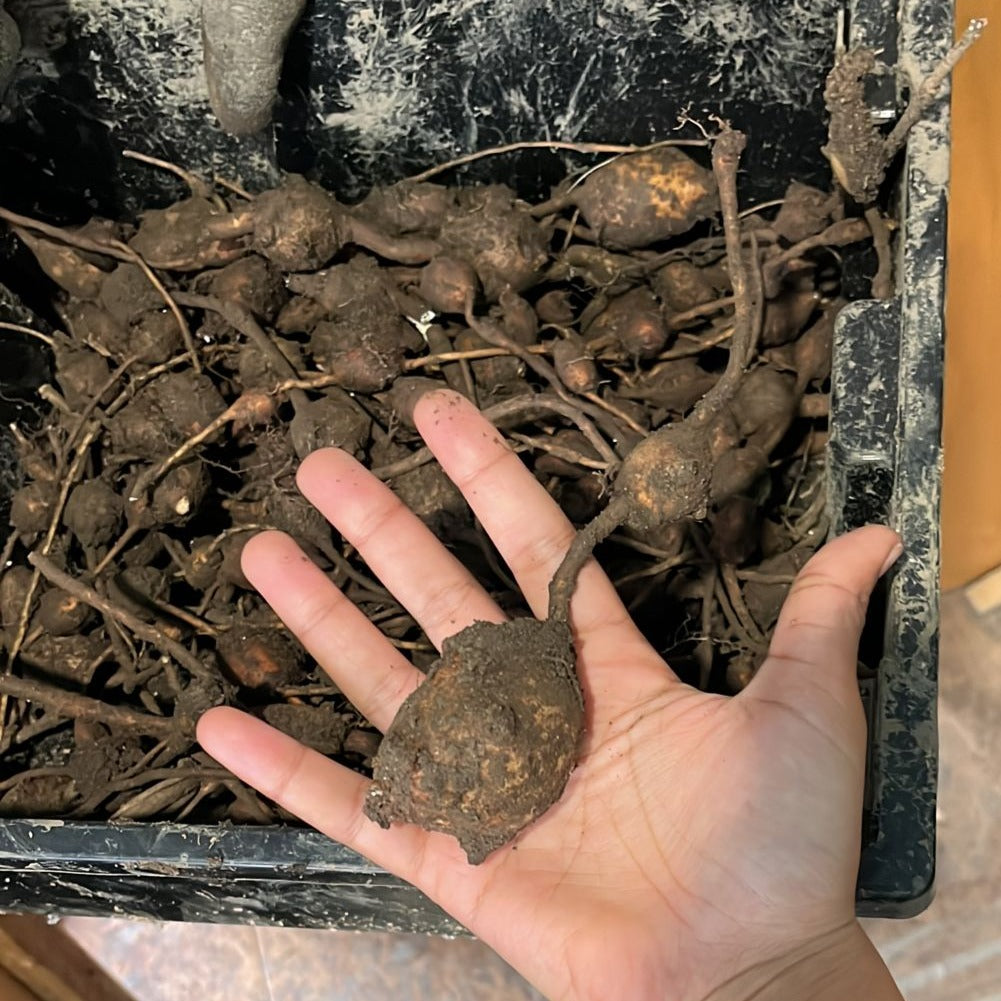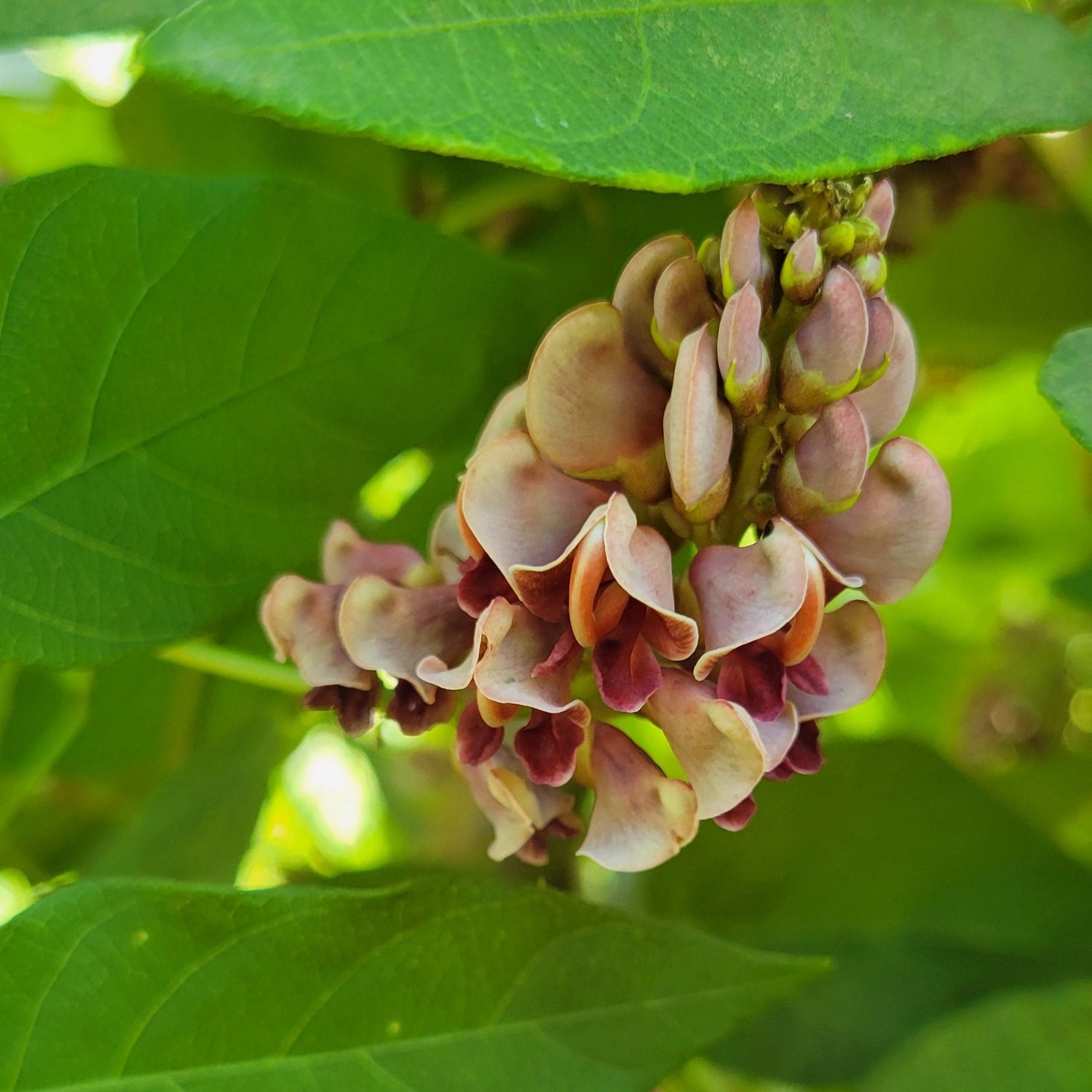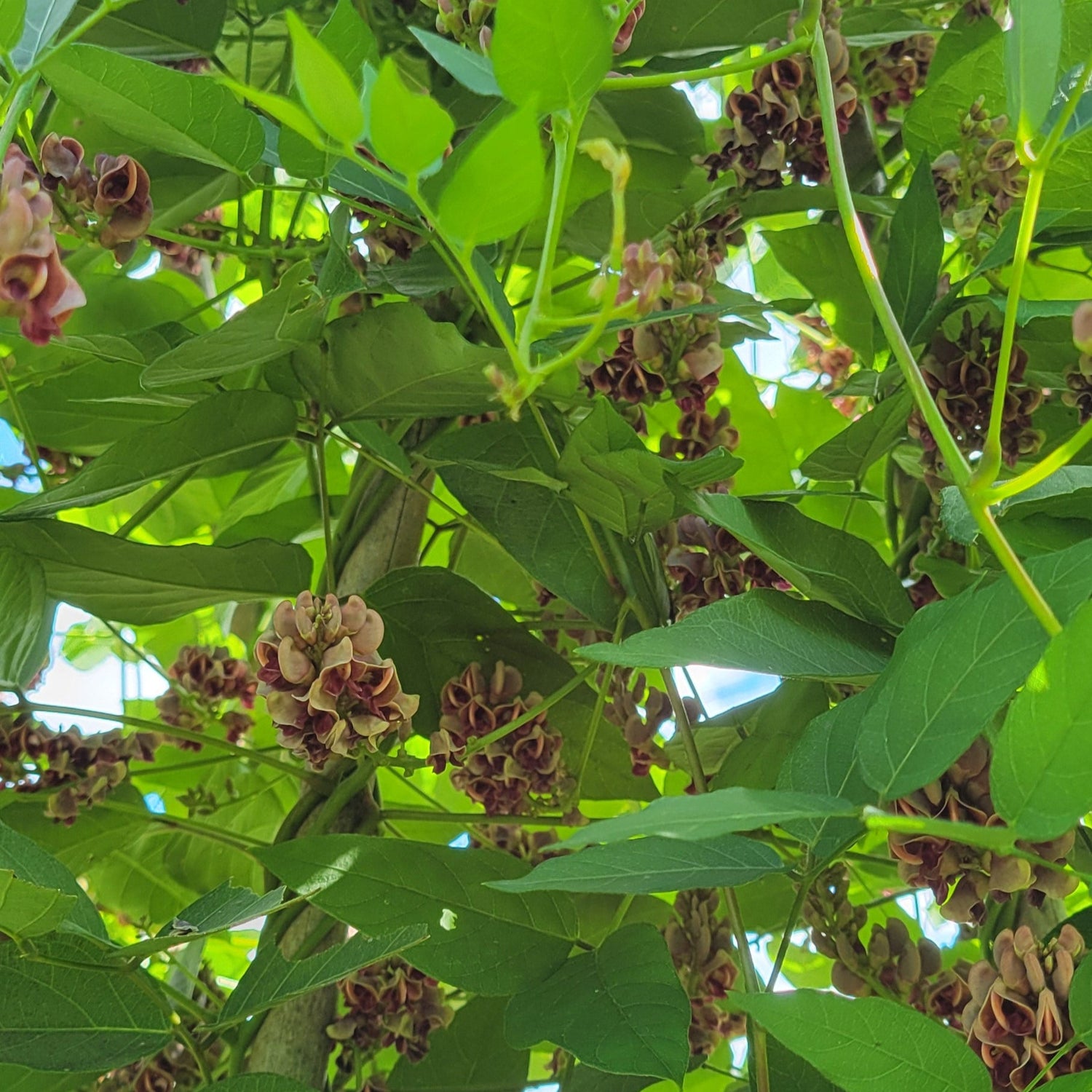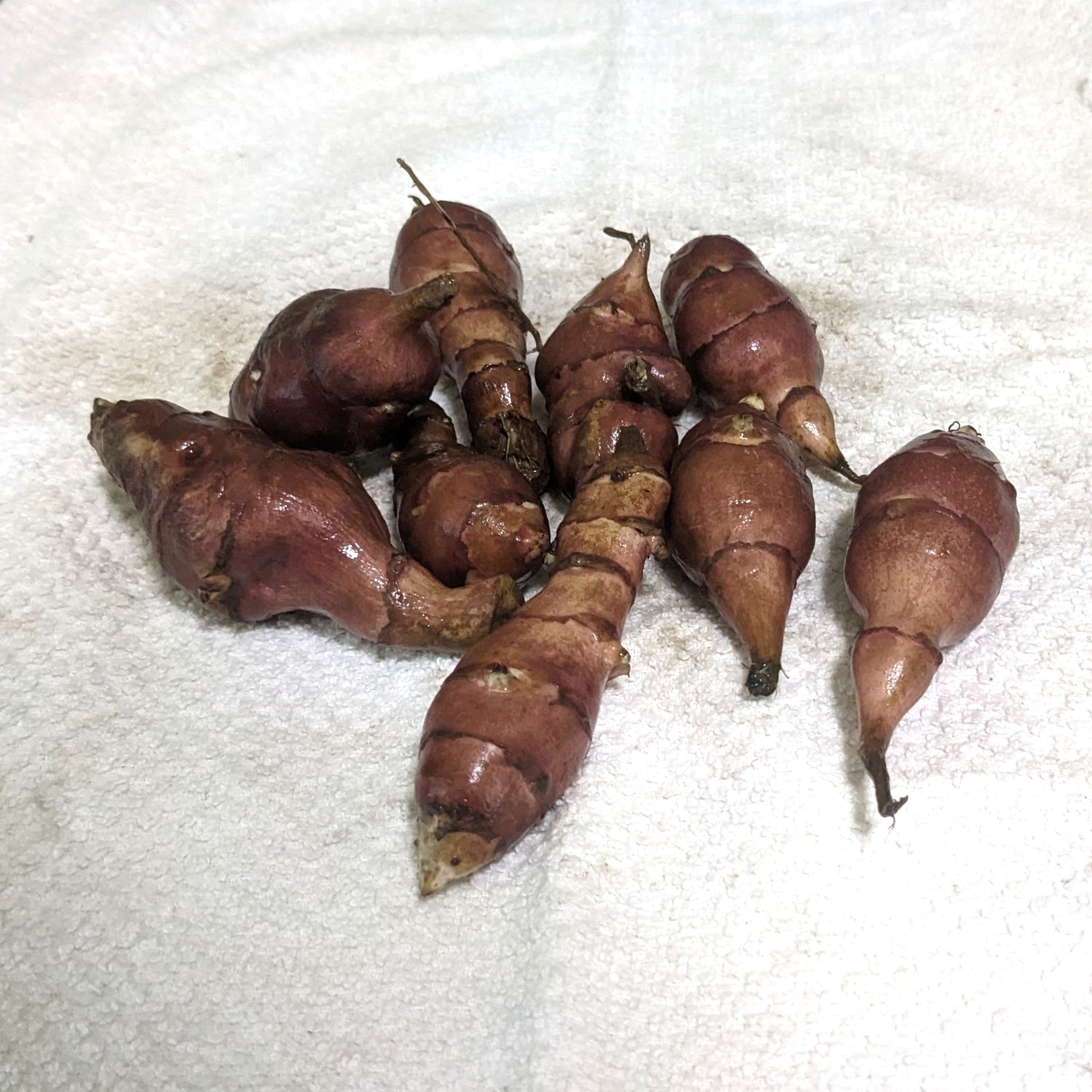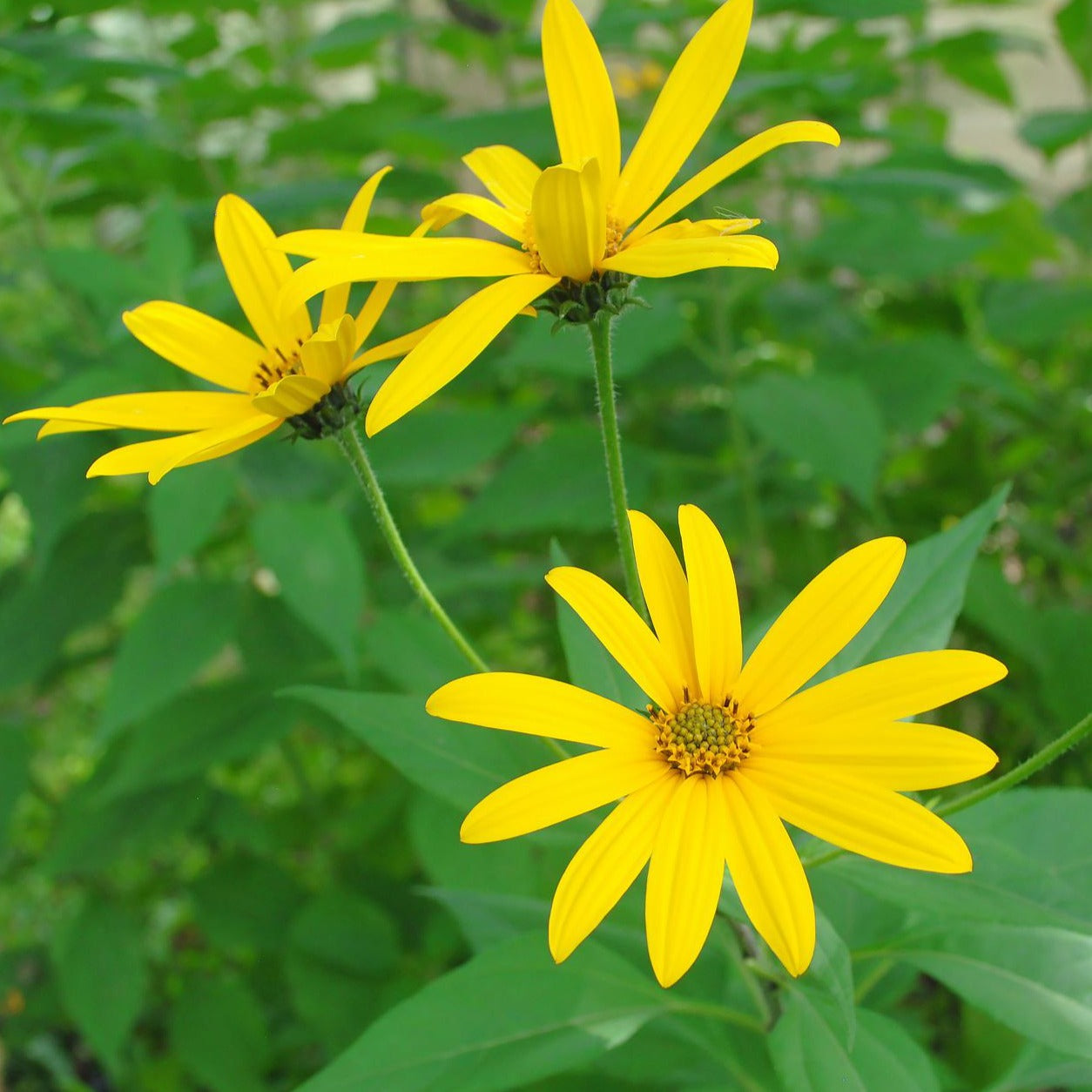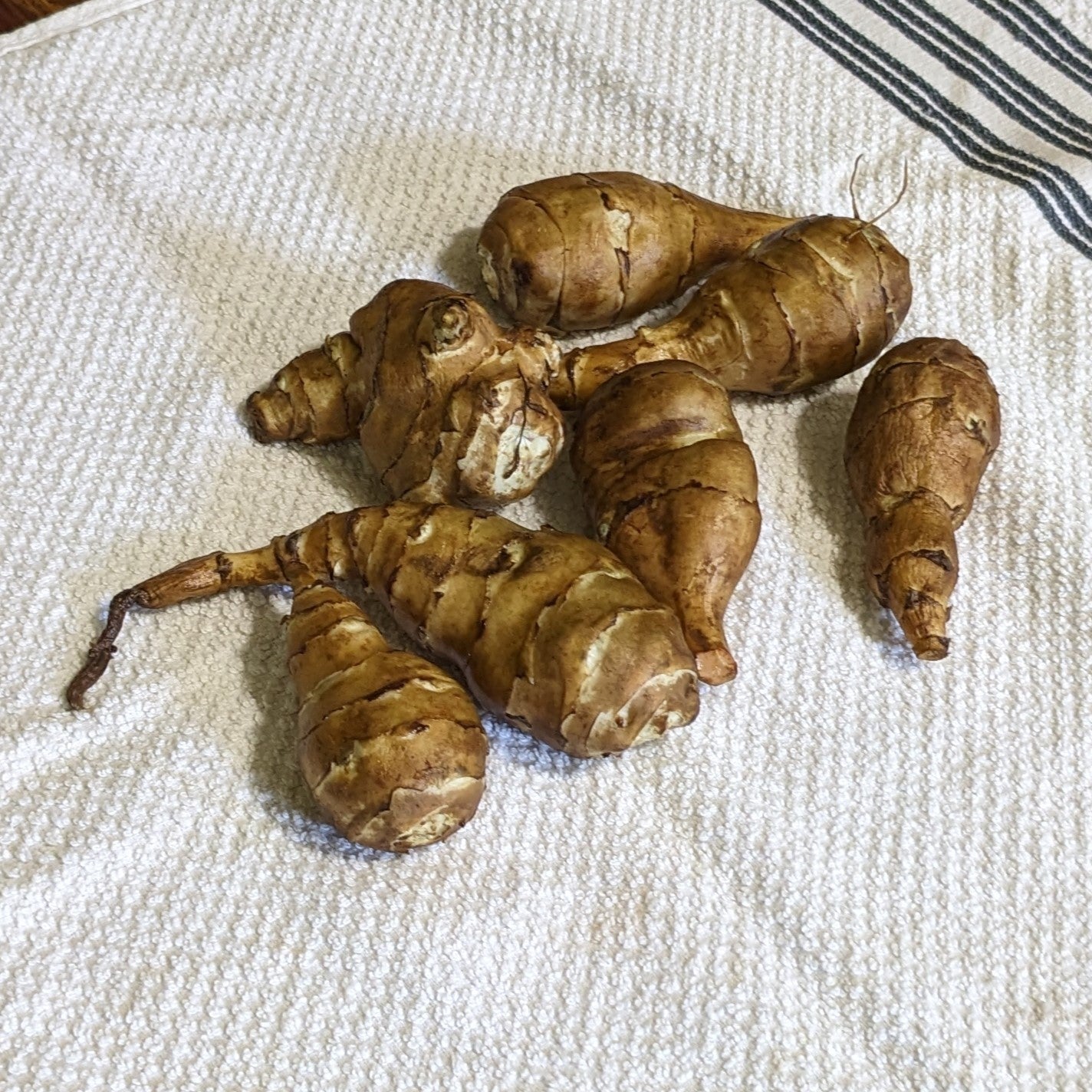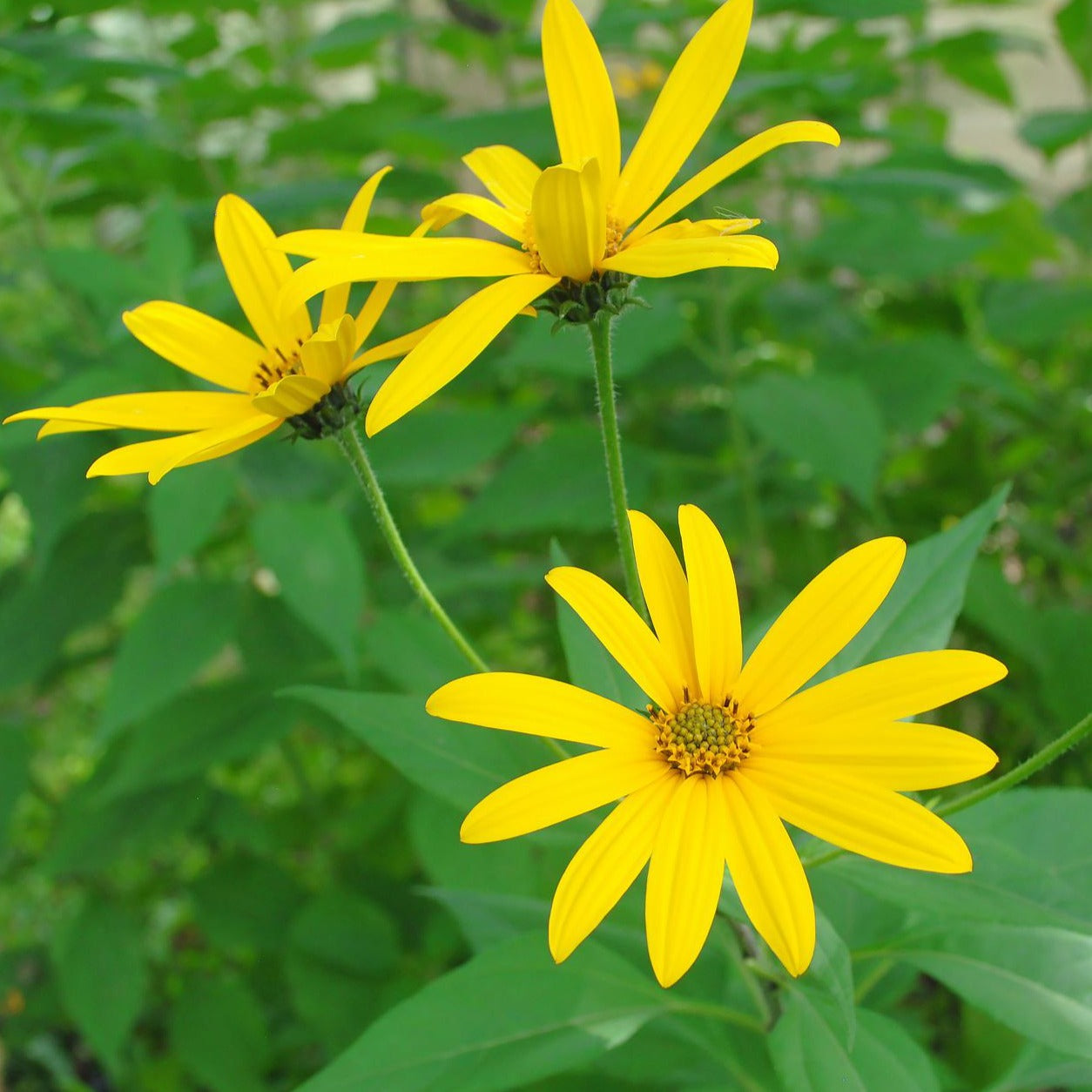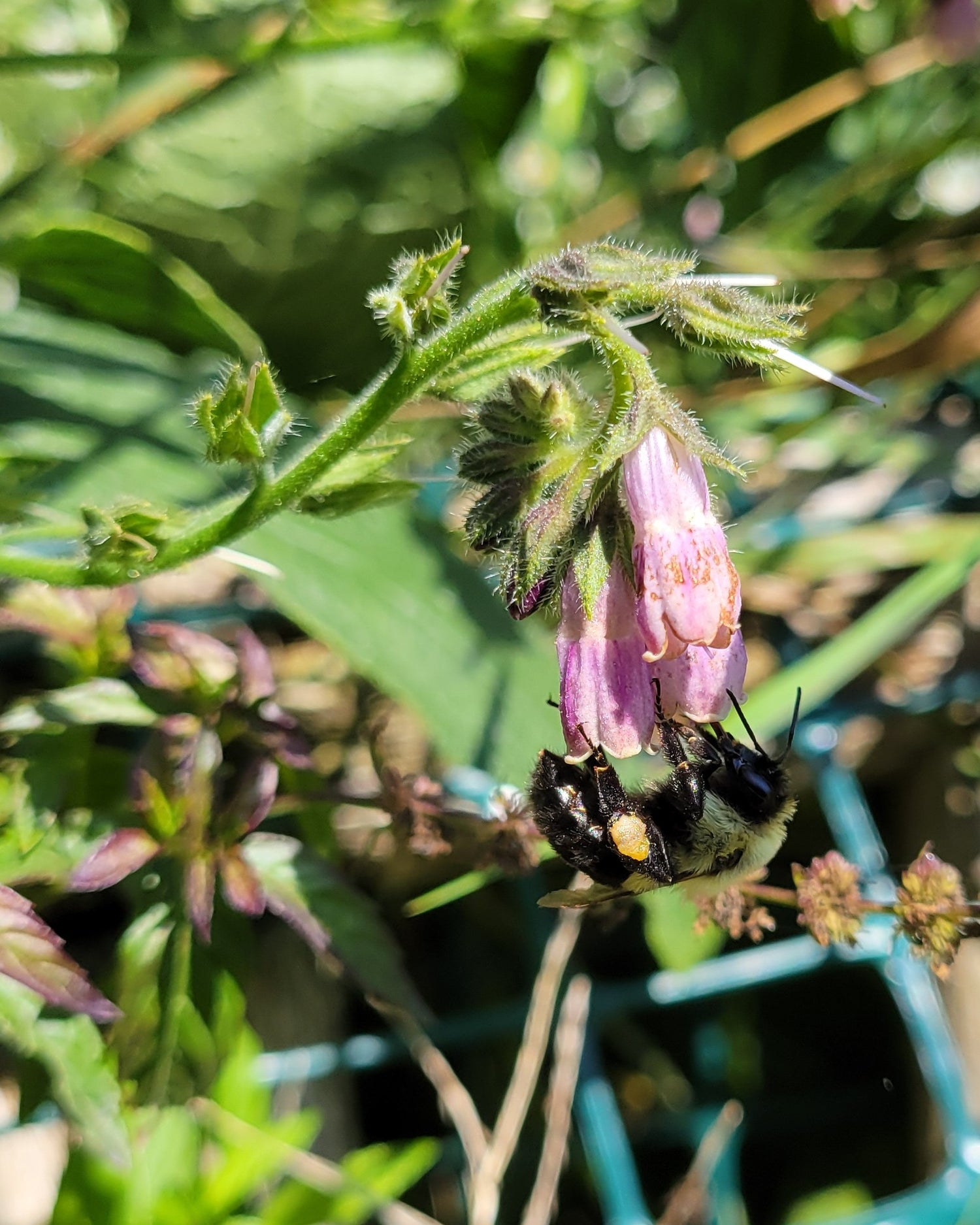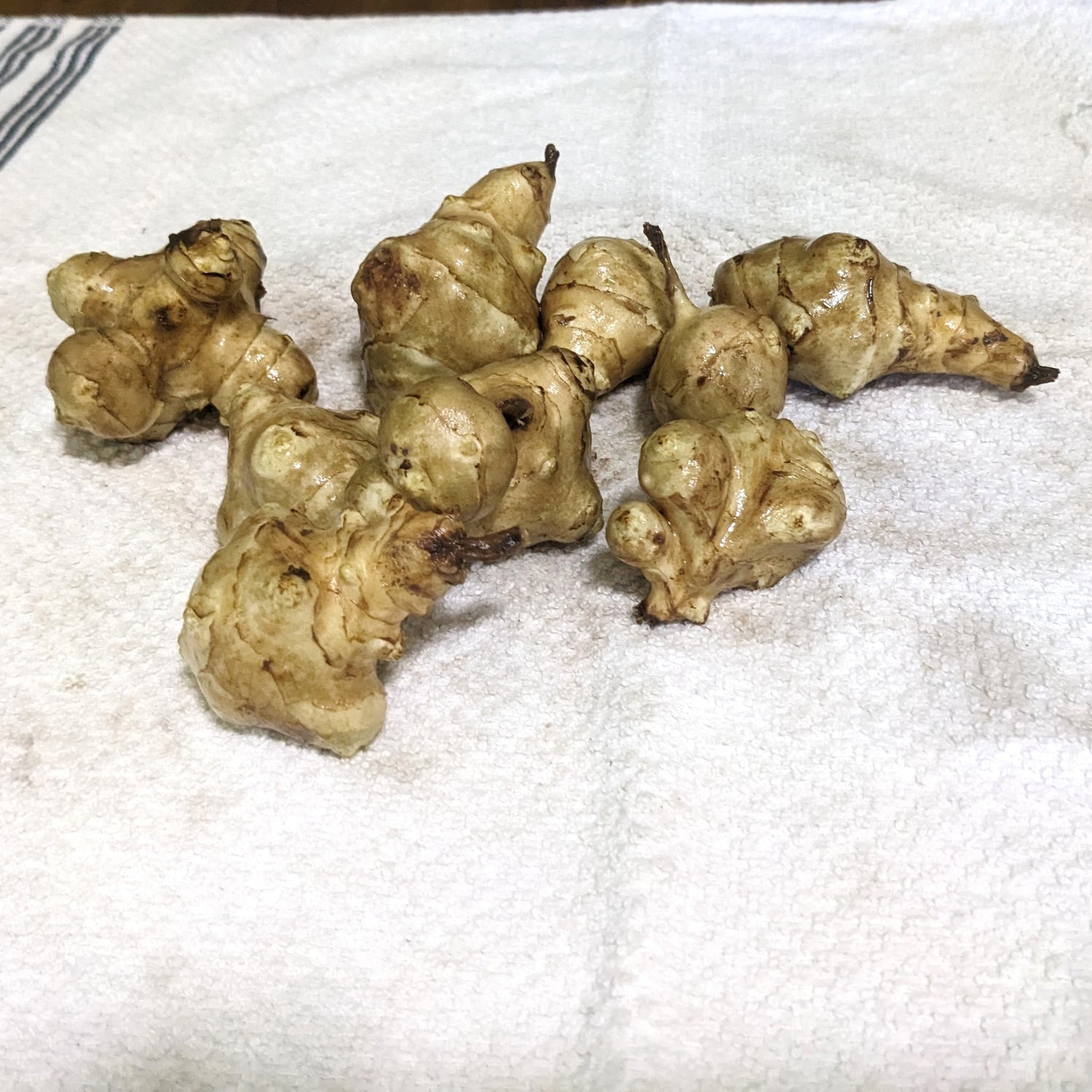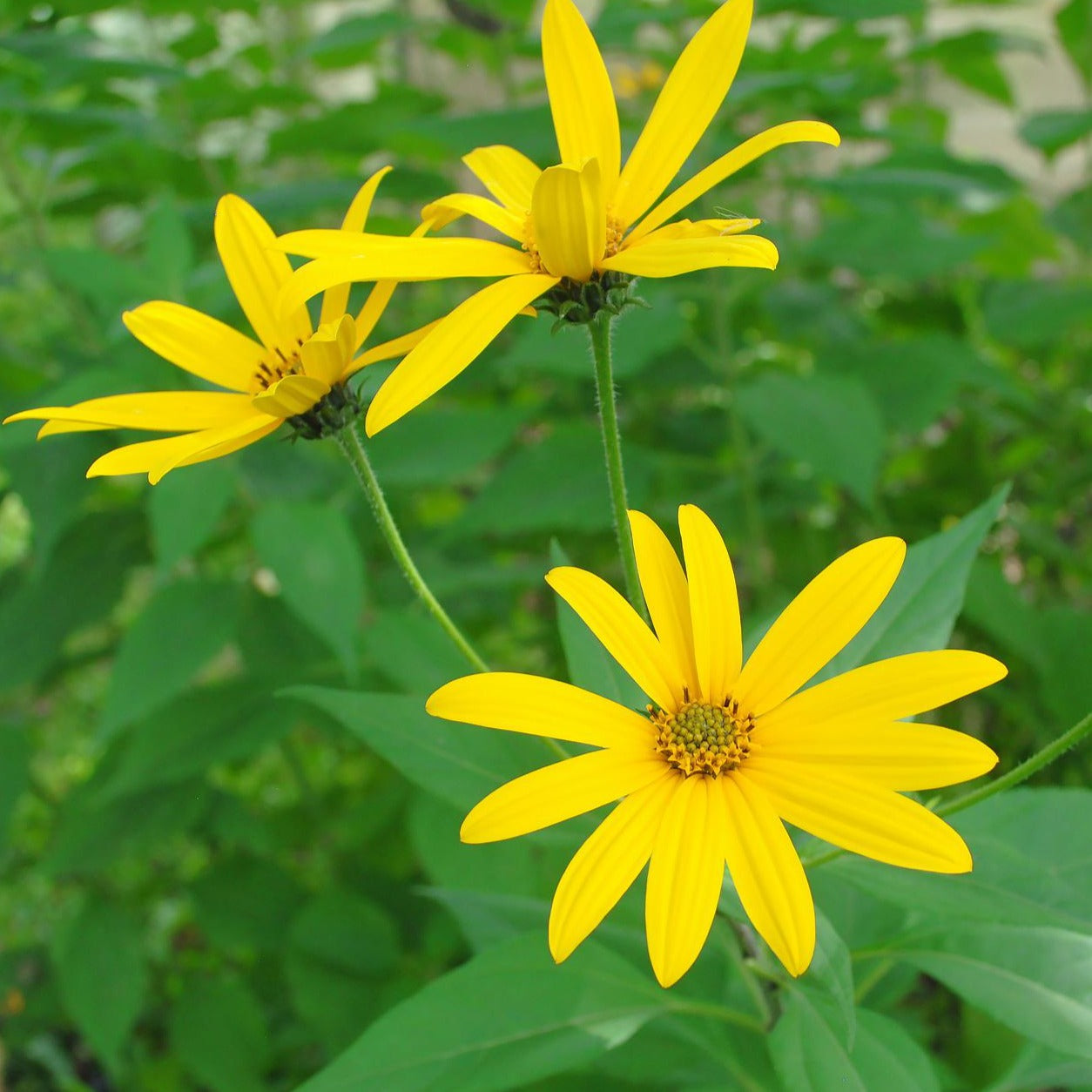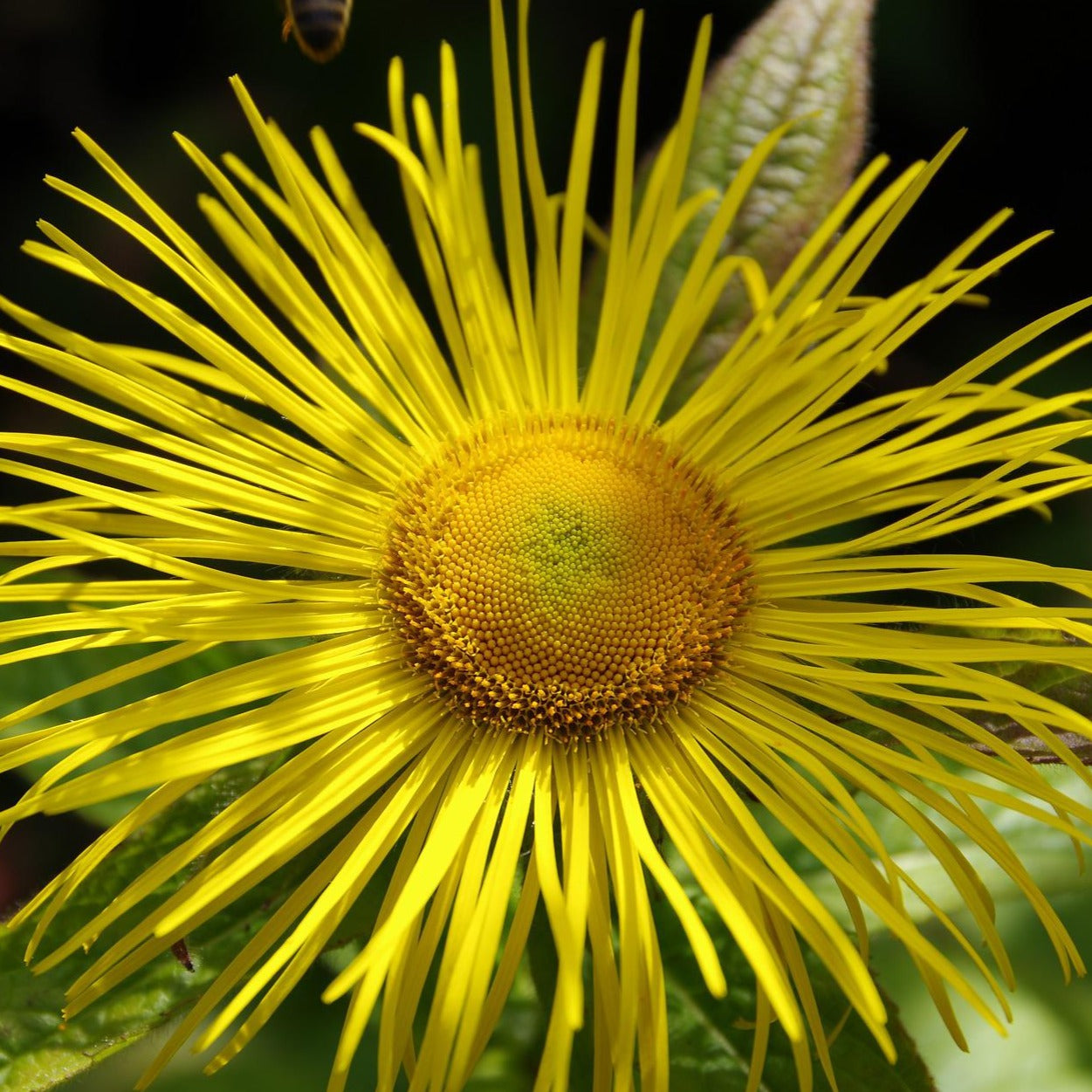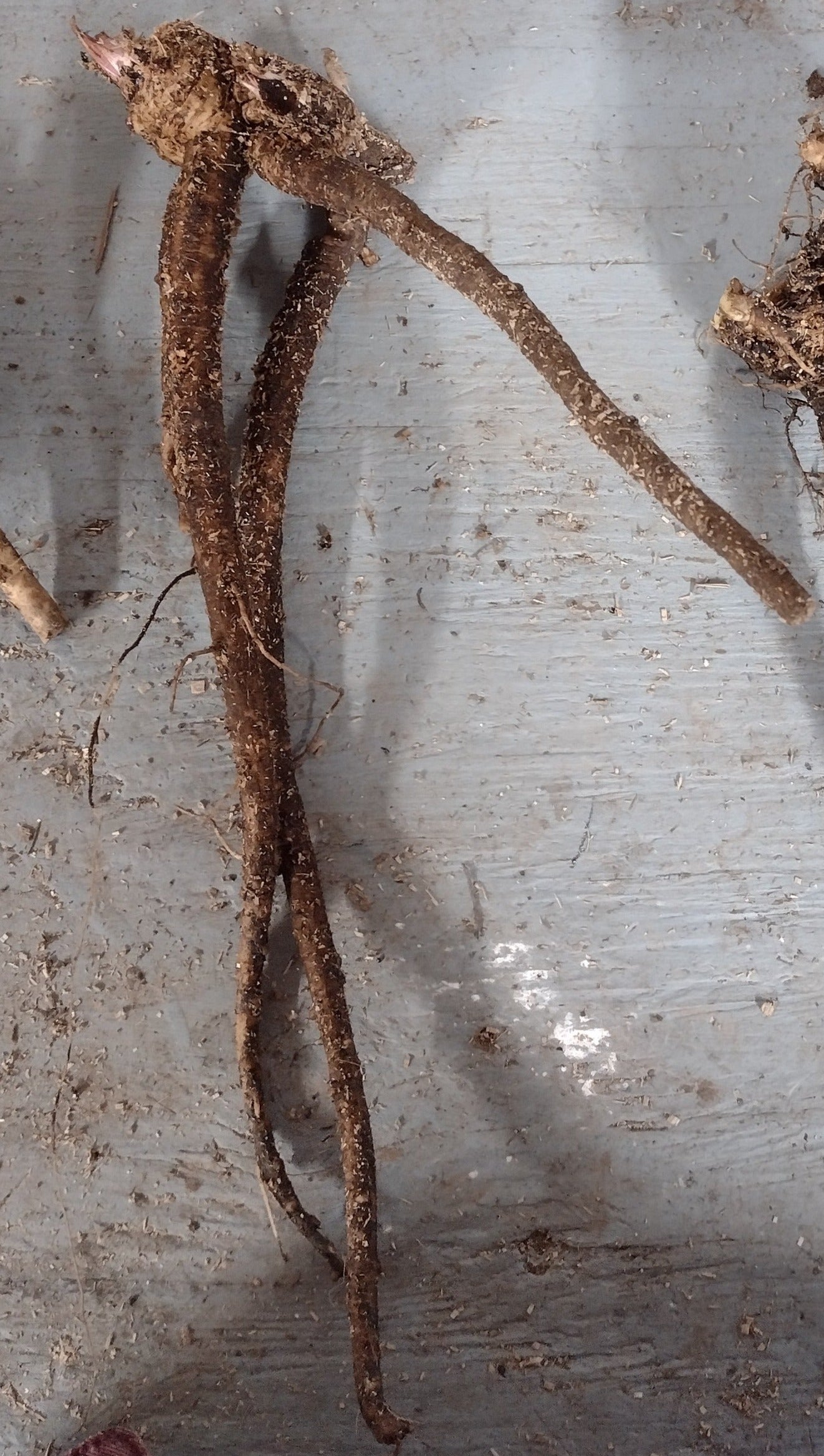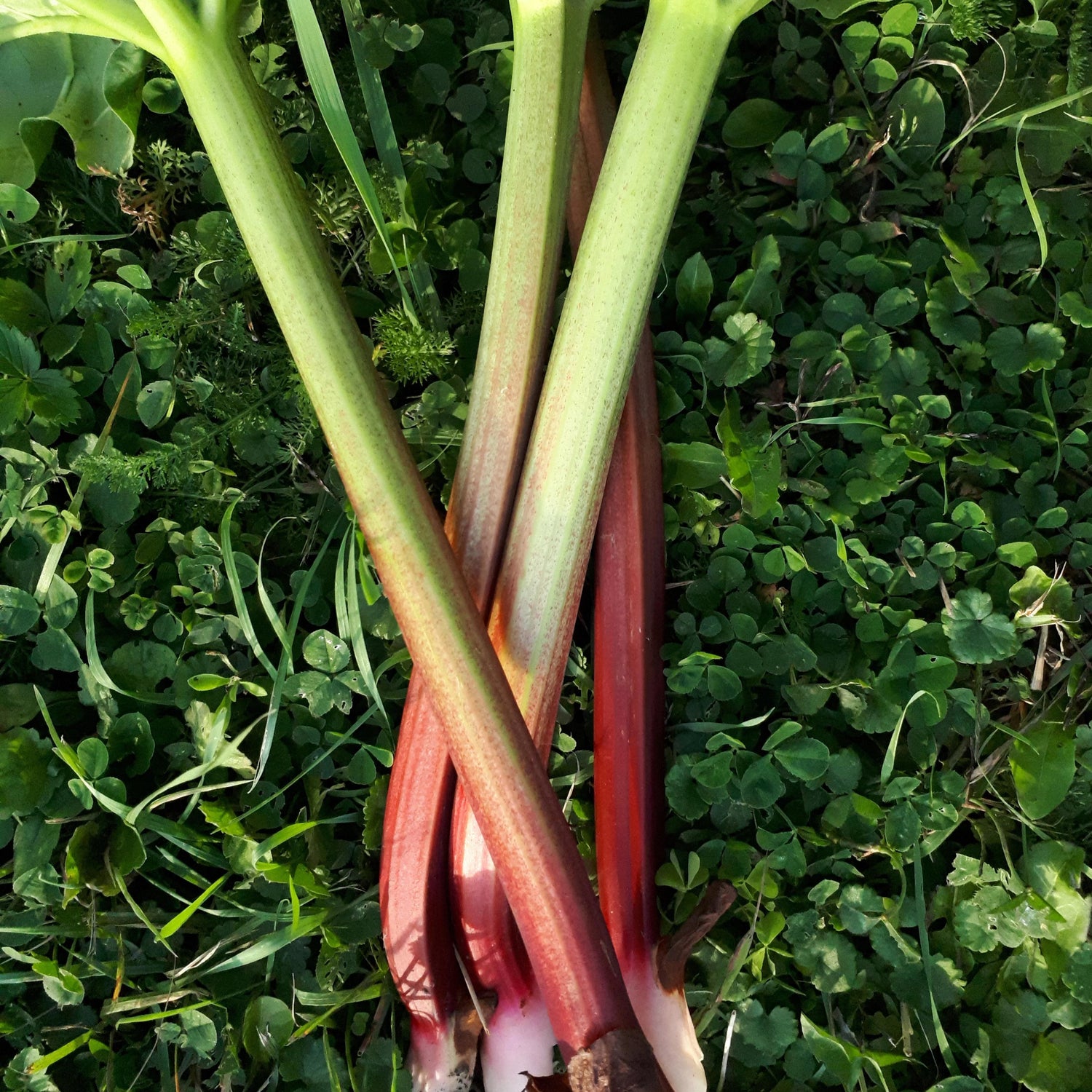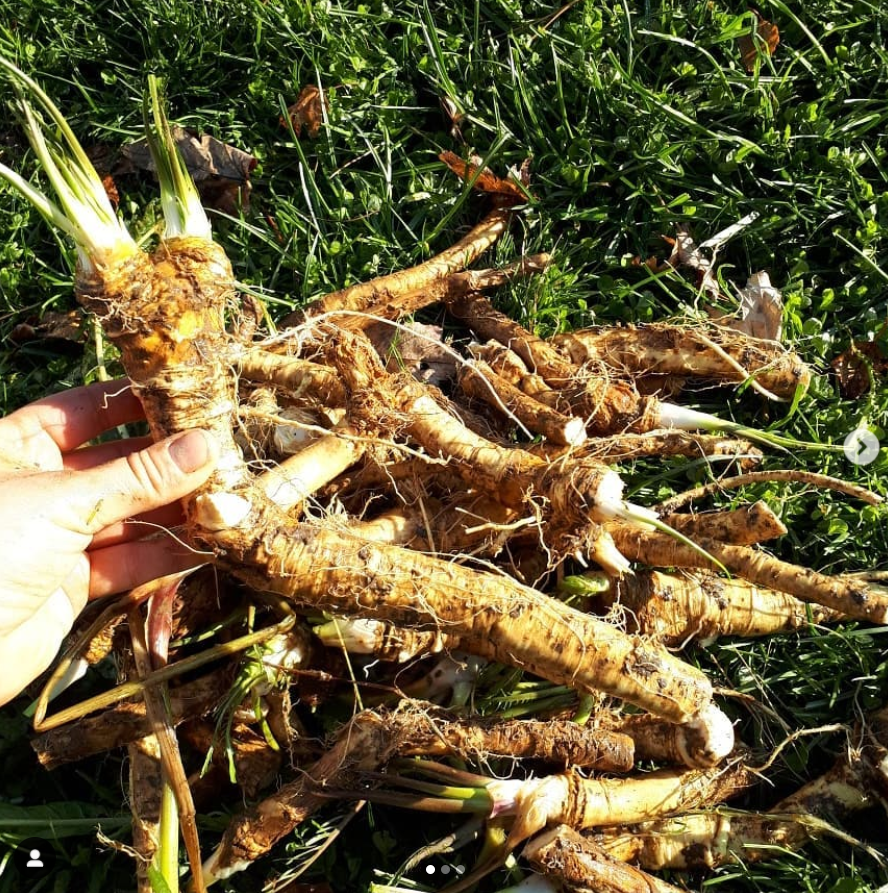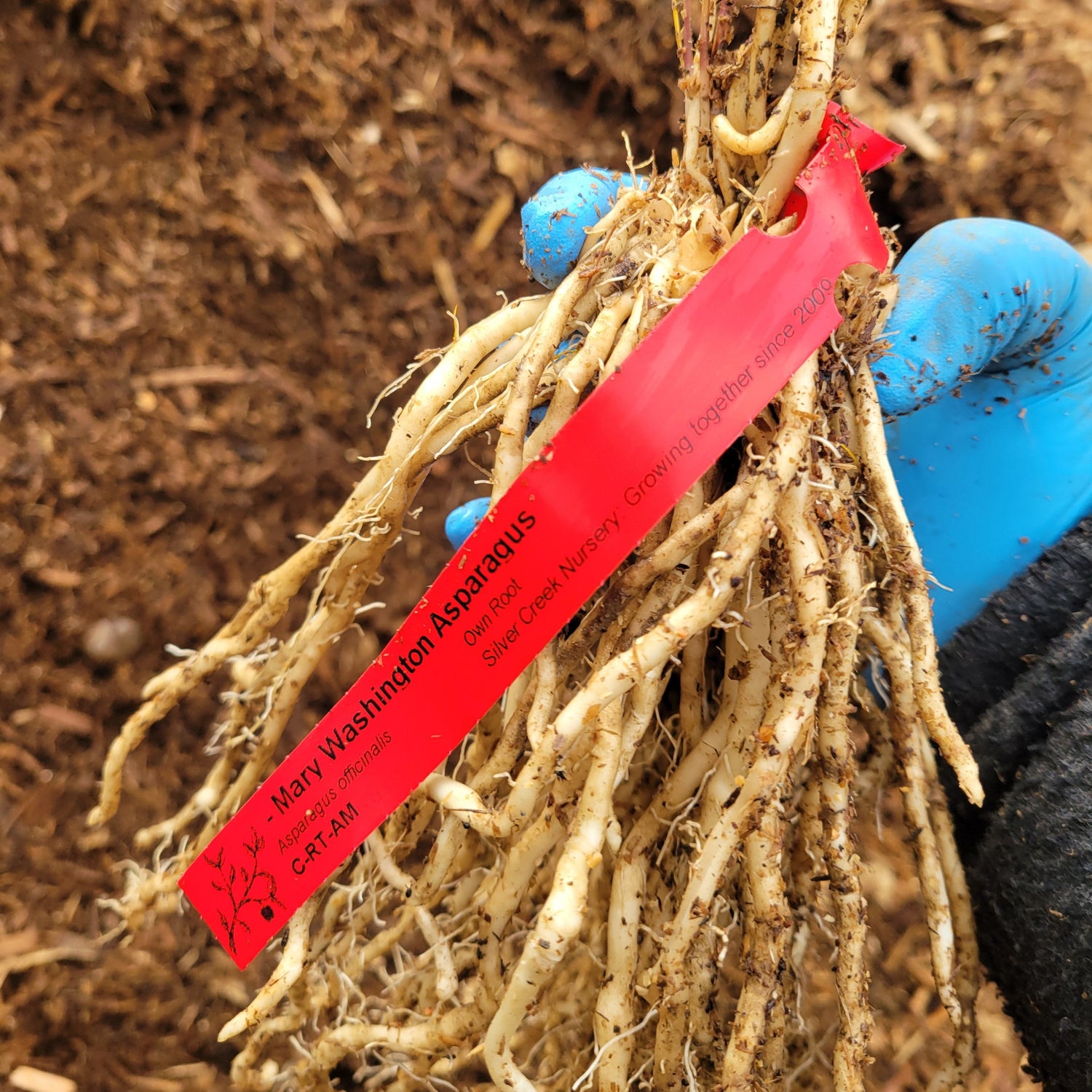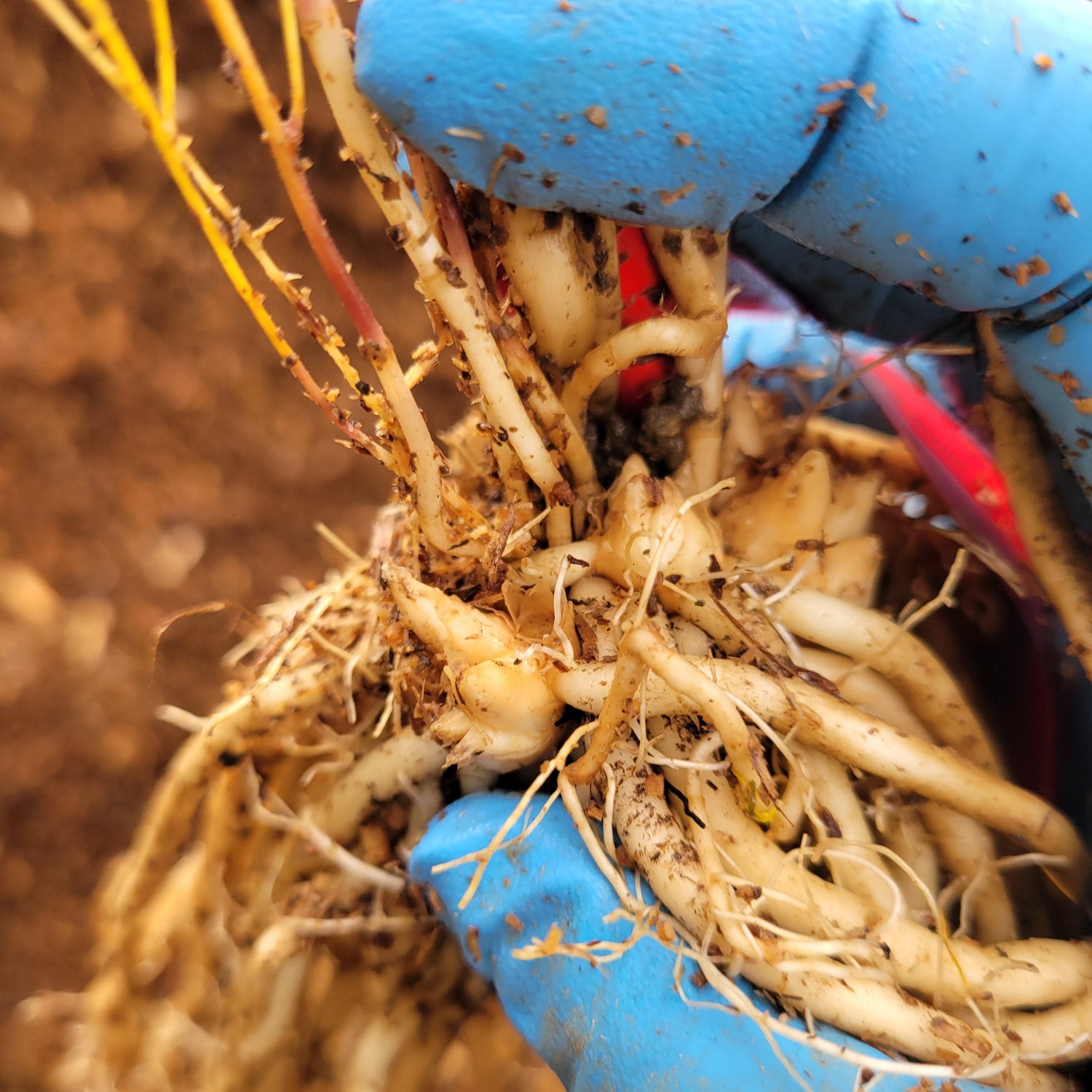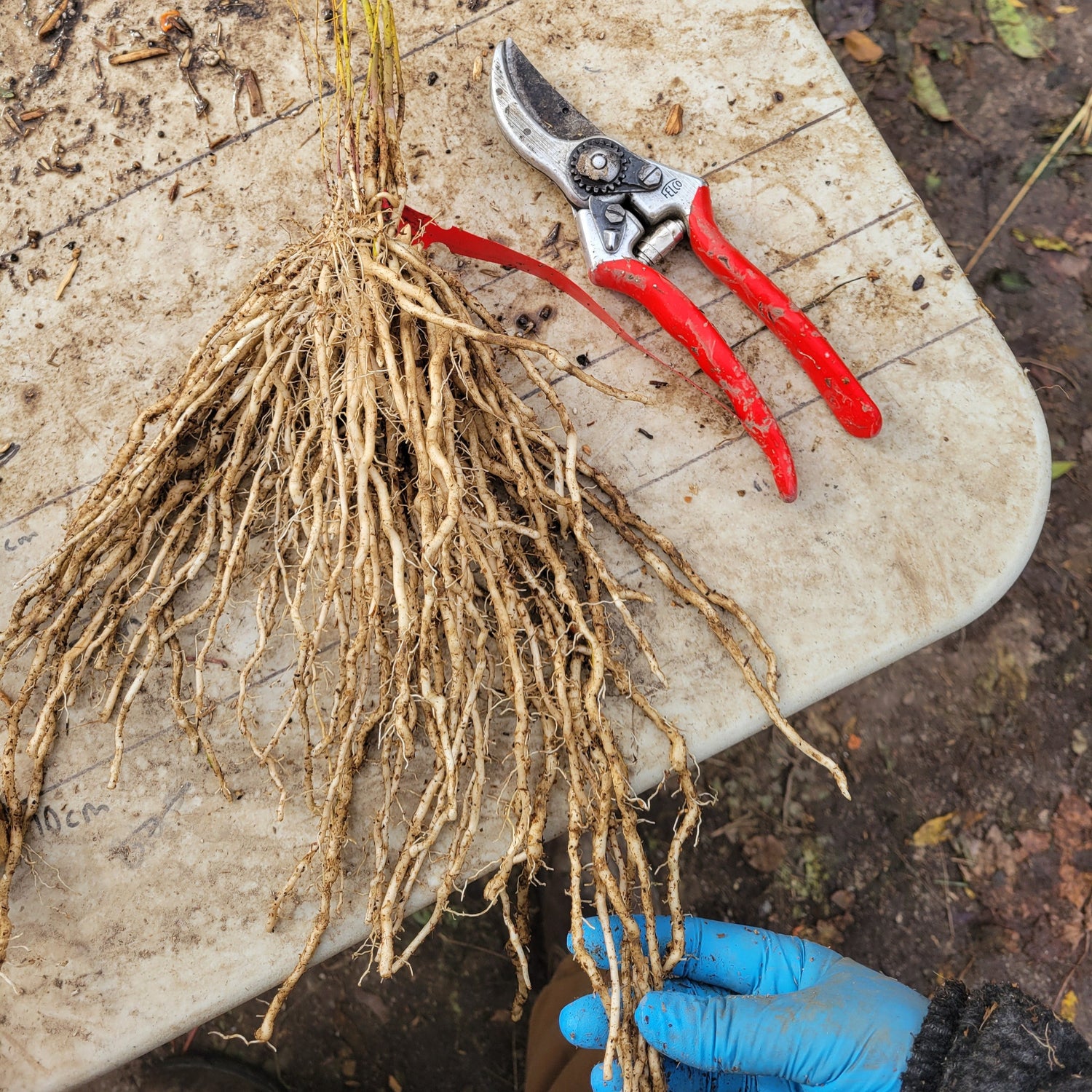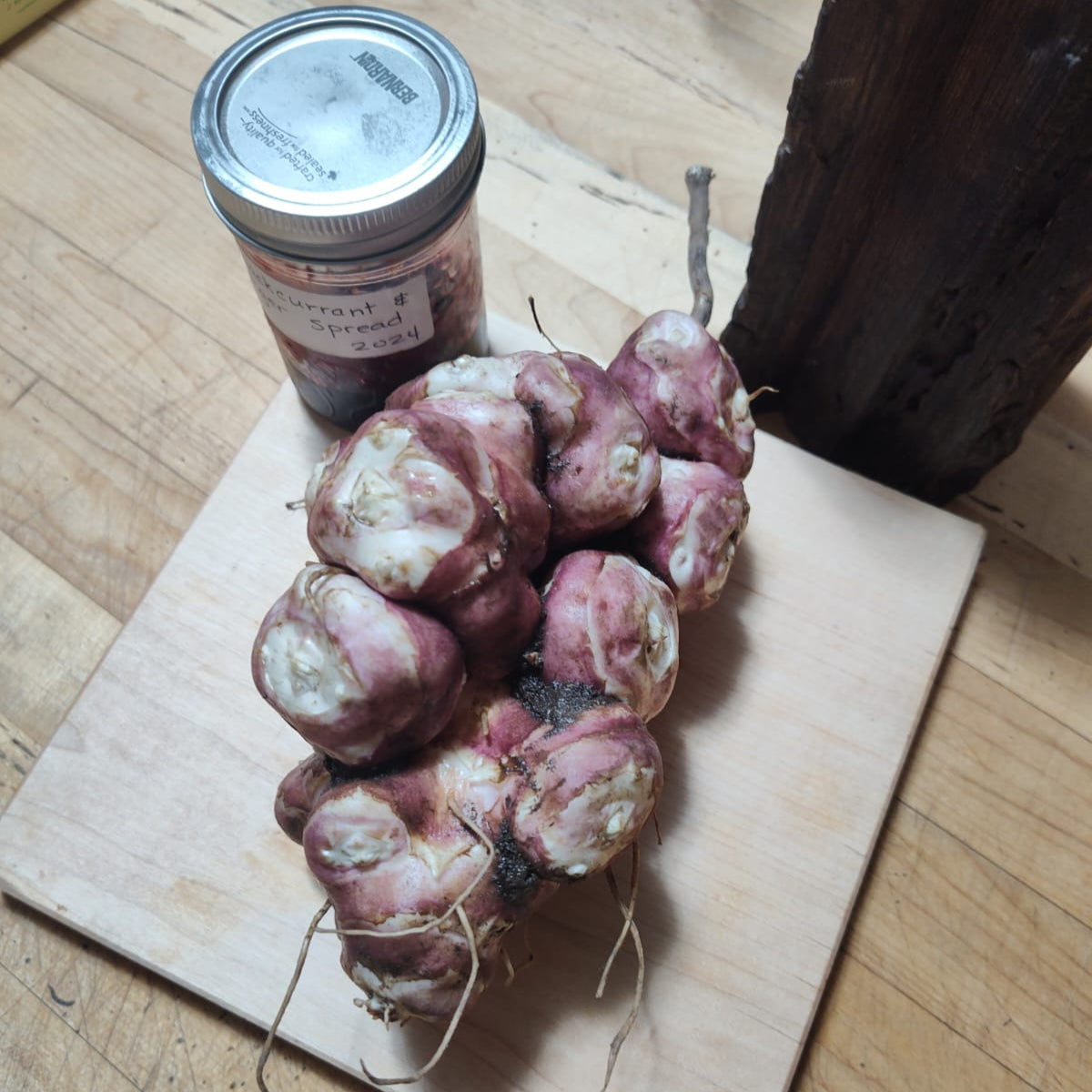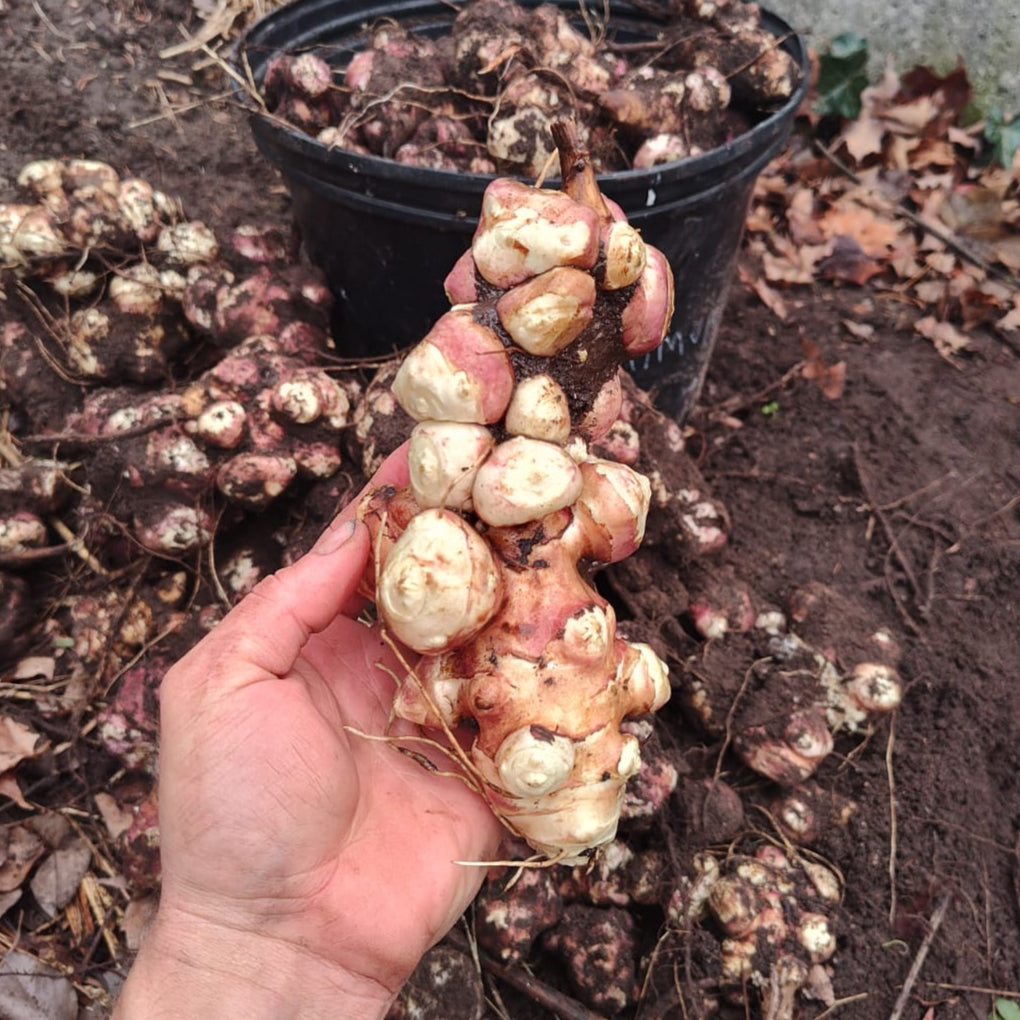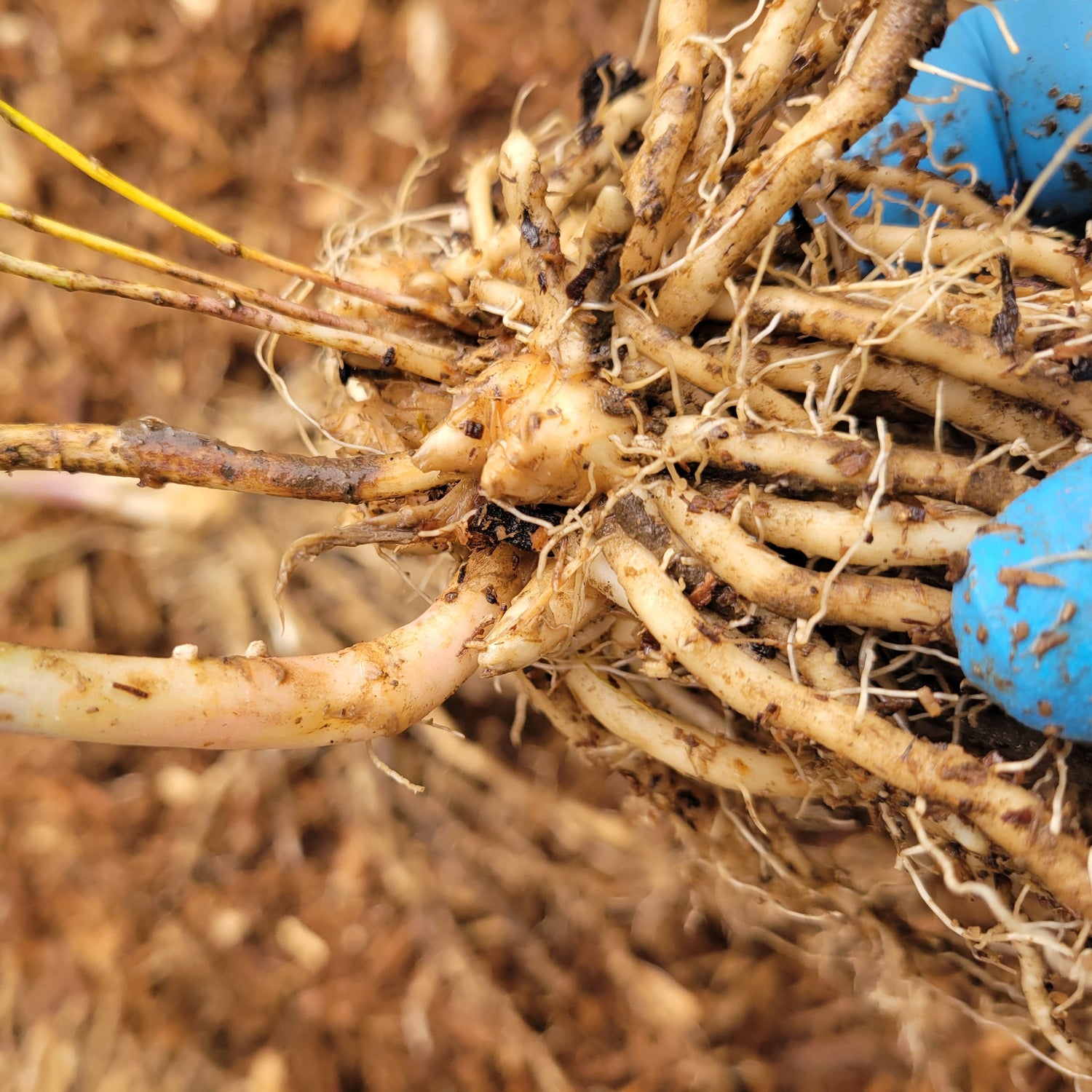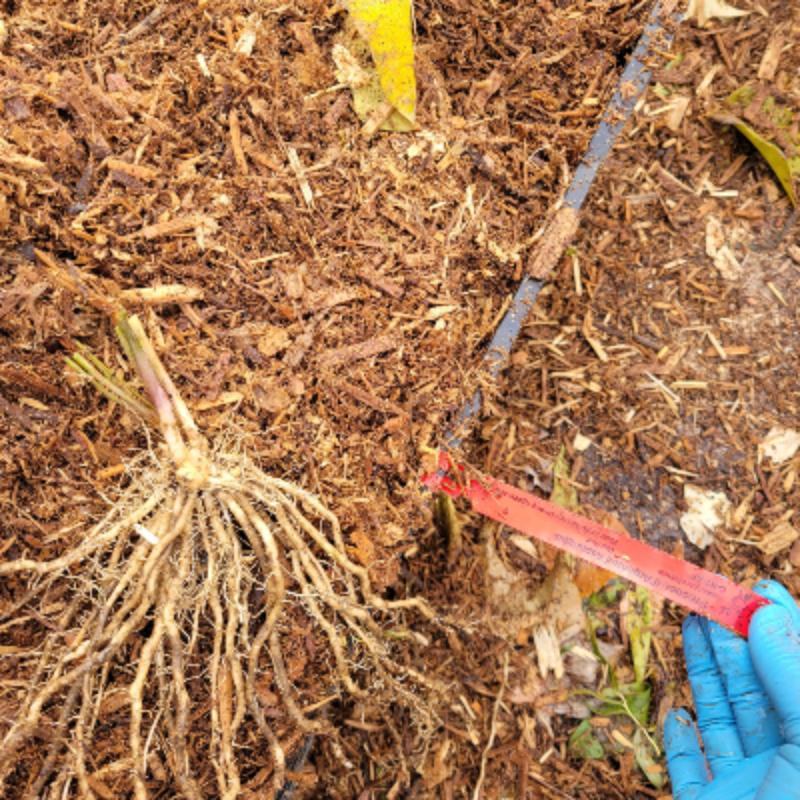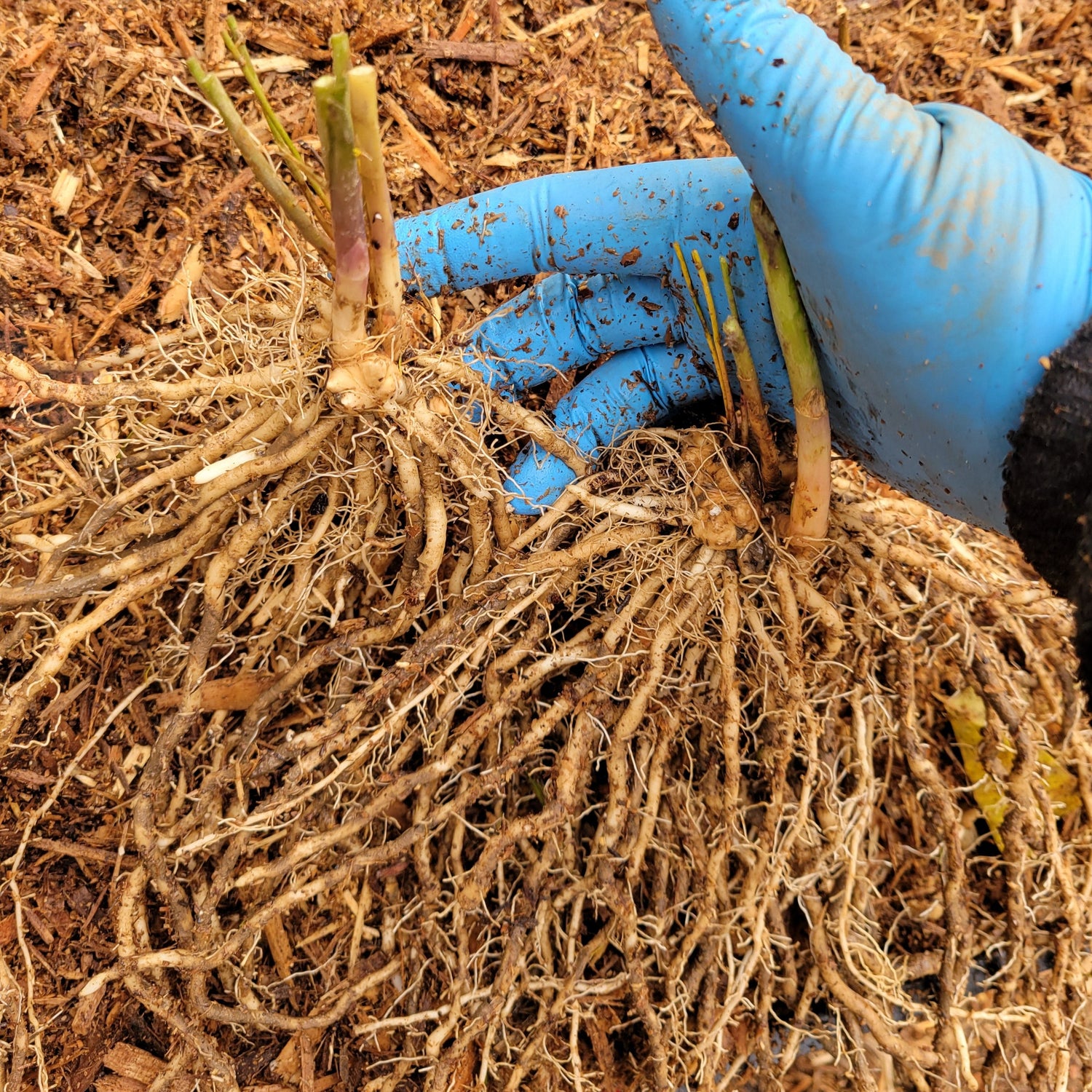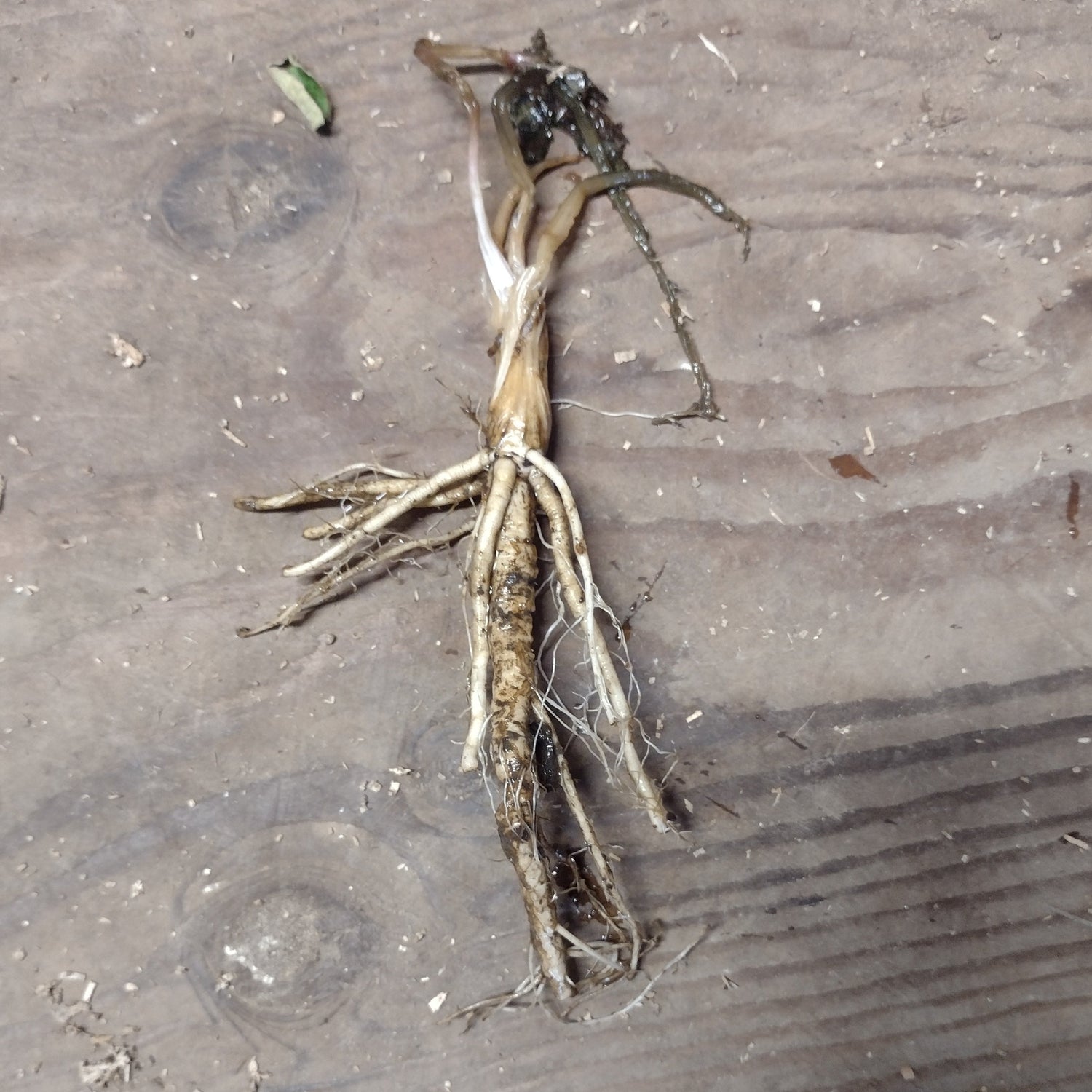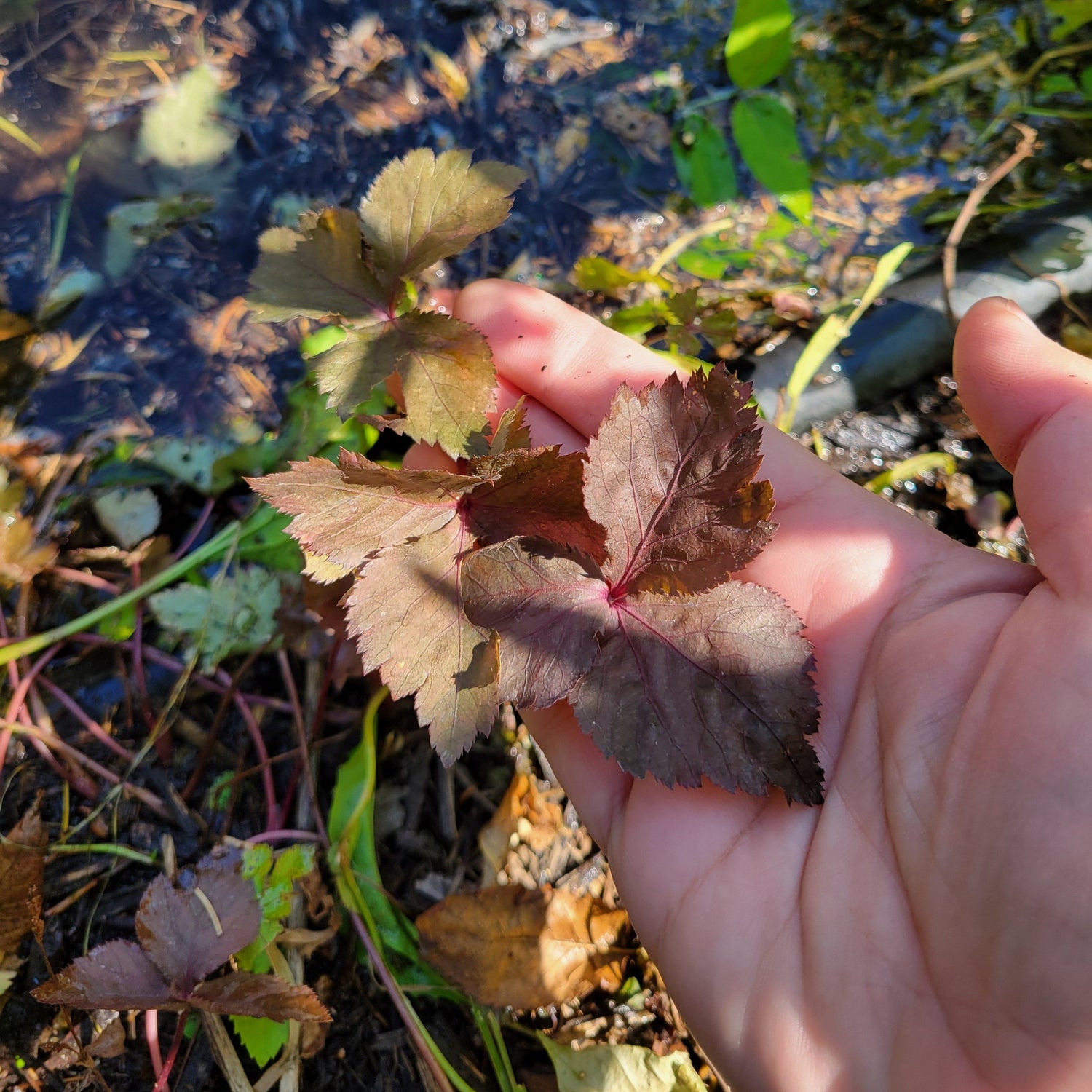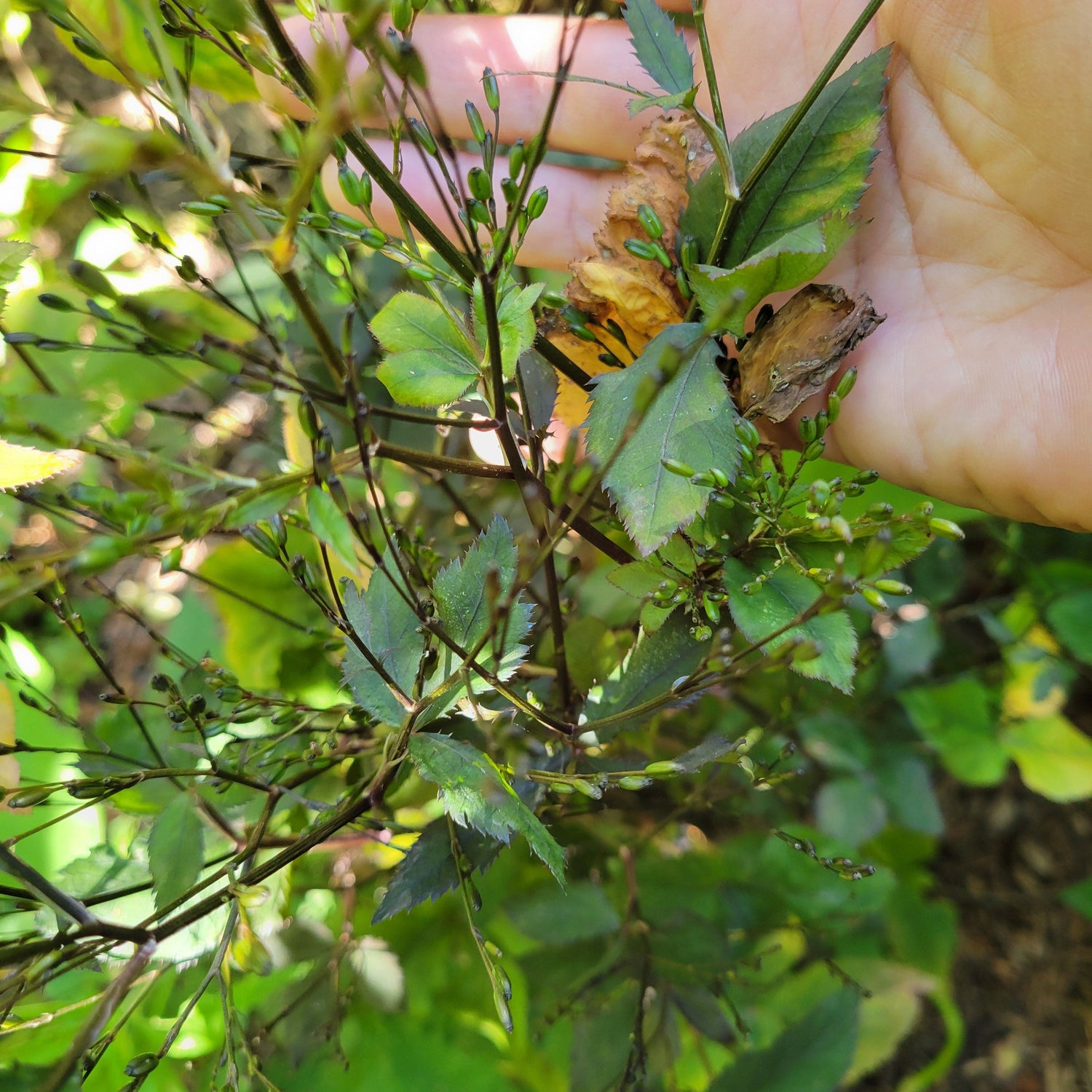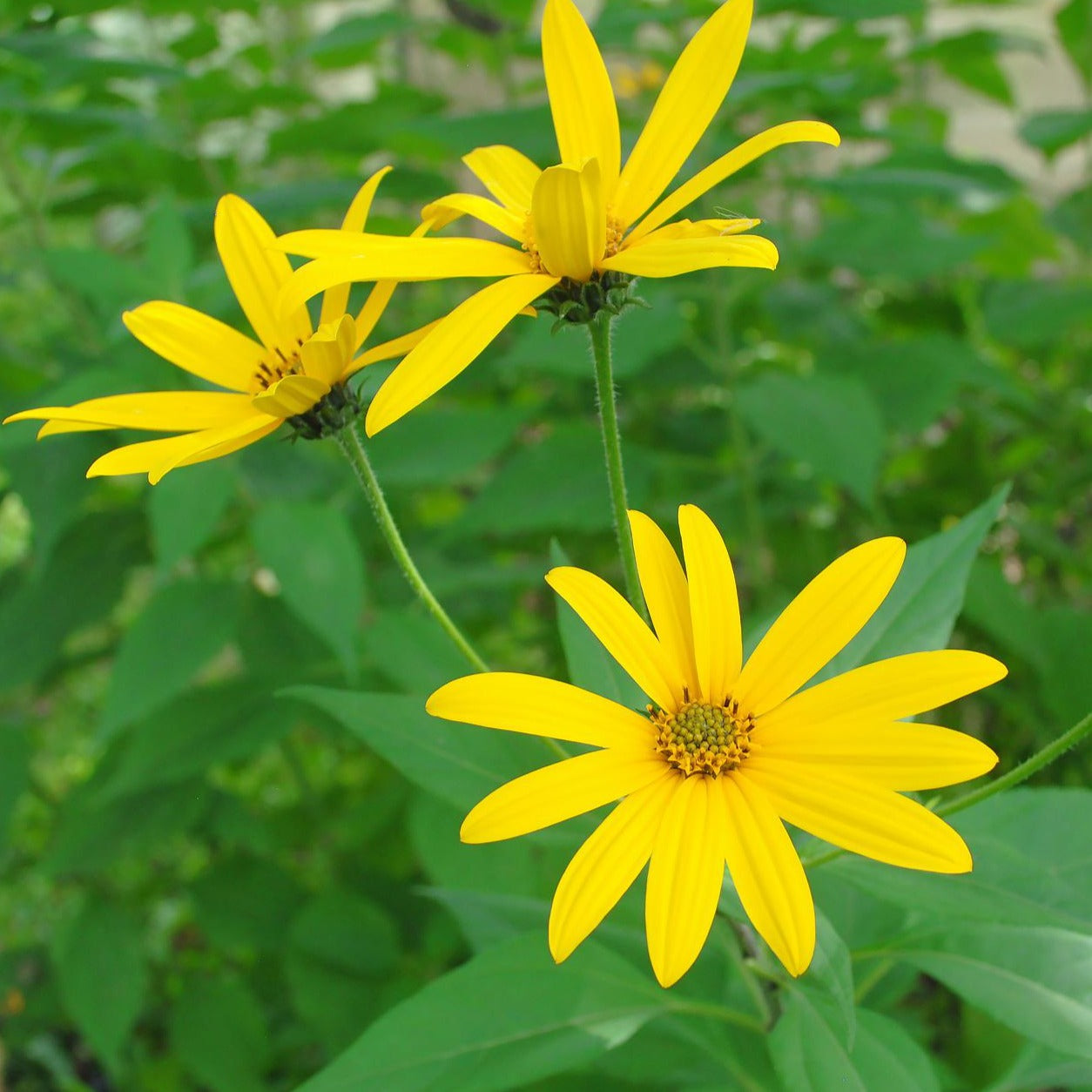Other Perennials
Sort by:
14 products
14 products
Species: Apio americana
History: American Groundnut (aka hopniss, potato bean, and hodoimo) is a native vine found from southern Canada down to Florida and west to Colorado. They are an important traditional food amongst indigenous peoples within its range and were introduced to European colonizers by these peoples. American Groundnuts failed to take off as a crop in Europe or colonized North America, although there have been efforts since the late 1900s to develop and promote cultivars in the US. Curiously, the only place where American Groundnuts are an important commercial crop is in Japan where it has become an important part of the Aomori Prefecture culinary scene following its introduction during the Meiji Period.
Why We Grow It: Although American Groundnuts have failed to gain much traction in the West, they are a great addition to the garden whether you are looking for a unique edible perennial or an ornamental plant. The shoots and seed pods are edible but American Groundnut is best known for the small tubers that grow in a bead-like manner along the roots. They are relatively small and taste similar to a potato but with more nuttiness. Like a potato, they can be used in a variety of ways! The unique burgundy flowers also make them appealing ornamentally. Just keep in mind that these vines can be quite vigorous and will spread!
Species: Helianthus tuberosus, Sunchokes are also known as Jerusalem Artichokes or J Chokes
History: Beaver Valley Purple was introduced by heirloom vegetable gardener William Woys Weaver in the latter half of the 1900s. When he visited Sarah Morgan, a cook and gardener, at her home in Beaver Valley, Pennsylvania, she showed him the unique purple sunchokes growing in her garden. According to Morgan, the purple sunchokes had been growing on the property when her husband purchased it in 1920 and locals already considered it an heirloom variety at that time. Weaver, a fan of heritage vegetables, named the variety and began to offer it through the Seed Savers Exchange.
Why We Grow It: Beaver Valley Purple produces a unique reddish-purple tuber that is visually quite distinct from other sunchokes. Sunchokes, similar to a potato, can be prepared and eaten in a variety of ways!
Species: Helianthus tuberosus, Sunchokes are also known as Jerusalem Artichokes or J Chokes
History: Little is known about the origins of Clearwater aside from the fact that it originated in Maine, possibly as a wild plant found in 1988.
Why We Grow It: Clearwater produces smooth, white tubers with a mild flavour that some say borders on sweet. This is a productive variety and the smoothness of the tubers generally makes them easier to clean. Sunchokes can be prepared and eaten in much the same way potatoes can, making them a very versatile food.
Species: Symphytum sp.
History: Comfrey plants are native to various continents around the world including Europe, Asia, and North America. Common names such as boneset and knitbone and its genus name referencing the Greek 'symphis' meaning 'growing together of bones' indicates it may have been used medicinally for mending bones. Comfrey is now popular as a permaculture plant.
Why We Grow It: This classic permaculture plant grows incredibly deep tap roots, mining rich nutrients from deep below the soil surface. It's a living mulch that 'molts' 3-4 times each season. It's used in traditional medicine and creates a healthful compost tea full of calcium and potassium. It grows up to 70 cm tall, before molting down, and spreads slowly over the years. As an added benefit, both honey bees and bumble bees love visiting the blossoms too!
Species: Helianthus tuberosus, Sunchokes are also known as Jerusalem Artichokes or J Chokes
History: Corlis Bolton Haynes discovered a wild sunchoke growing on the farm her parents purchased in 1925 and then spent over sixty years selectively planting the biggest and smoothest tubers in order to improve on the plant. Corlis sadly passed away in 2003 but her family maintains the tradition of only replanting the biggest and best tubers.
Why We Grow It: This variety produces large, white, knobby tubers that like a potato can be prepared and eaten in a variety of ways! This variety is quite productive and the tall plants can be used as a temporary windbreak and/or privacy screen.
Species: Inula helenium
History: Elecampane is native from Spain all the way to parts of China and has become naturalized in parts of North America. It has traditionally served a variety of purposes including being used to treat snake and spider bites by the Ancient Greeks, to test if honey has spoiled by the Ancient Romans, as a candied snack in Medieval Europe, and to make absinthe. Throughout its long history it has provided various medicinal uses as well. It also has quite the storied past, with the species name referring to the myth that the plant sprung up from the tears of Helen of Troy while the Celts associated it with fairies and elves.
Why We Grow It: Although not commonly used medicinally today, it still provides some novelty to the garden. The small, yellow flowers resemble those of asters to which it is related. The flowers attract pollinators and the roots, like comfrey, are good at mining nutrients from deeper in the soil.
2025 Staff Favourite
Grandma Barbara-Anne Rhubarb is Steph's favourite this year! In her experience, “it makes a really pretty pink juice when cooked down. She used it to create a salad dressing that was lovely both in colour and flavour!”
All Staff Favourites are 20% off. The Staff Favourite Discount cannot be combined with other quantity discounts.
Species: Rheum sp
History: Zack's grandma Barbara-Anne grew this variety on her homestead near Poplar Hill. It has been enjoyed throughout the generations in a multitude of crisps, jams, tarts, sauces, and pies (see one of Mouse's pies in the pictures!).
Why We Grow It: Rhubarb is nutritious, incredibly easy to grow, and sports a showy bloom appreciated by both pollinators and humans. This perennial vegetable creates a lush, delicious ground cover and can be used to make a variety of delicious dishes.
A note on the "Grandma" Series: Inspired by Ken's 'Grandma Ethel Black currant', we decided to curate our own repertoire of family favourites grown by our grandmothers! Check out our tried-n-true gooseberries and raspberries in addition to the currants and rhubarb.
Species: Armoracia rusticana
History: Horseradish originated somewhere in the Mediterranean and has been well known since ancient history, appearing in writings from Ancient Greece, Ancient Rome, and the Renaissance. It has historically been used for both culinary and medicinal purposes in Europe and was introduced to North America by European colonizers where indigenous peoples also adopted it for medicinal use. Today, horseradish is commonly grown around the world and used in cooking or to make sauces. An enzyme in horseradish also has applications in molecular biology and biochemistry!
Why We Grow it: Horseradish is a root vegetable with a distinctly pungent and sharp taste. As a result, it is most often used in cooking and making sauces/condiments. It is a hardy vegetable and has a tendency to spread through the garden so extra care should be taken to keep it contained when planting it.
Species: Asparagus officinalis
History: The parent of these seedlings, Mary Washington, was introduced by the US Department of Agriculture in California in 1949. Named after George Washington's mother, it is part of the Washington series of asparagus. Fittingly, it remains one of the most popular varieties of asparagus in the US today. These seedlings may vary from their parents but should bear similar traits!
Why We Grow It: We love offering seedlings as a way to add some diversity to the plants being grown! The parent variety Mary Washington is known for producing large quantities of uniform spears in the spring. They have an excellent nutty and buttery flavour and are known for being resistant to rust. They are hardy against both cold and heat.
2025 Staff Favourite
Mavor Sunchokes are Zack's favourite this year! In his personal experience "the large tuber size of these sunchokes makes them a great potato substitute. They are great fried in beef tallow!”
All Staff Favourites are 20% off. The Staff Favourite Discount cannot be combined with other quantity discounts.
Species: Helianthus tuberosus, Sunchokes are also known as Jerusalem Artichokes or J Chokes
History: Mavor sunchokes are of unknown origin since they were kindly given to us by a local customer named A. Mavor. We were impressed with the large size and flavour of this variety and wanted to make them available to more customers, so are offering them under the name Mavor as thanks to the person who gave them to us.
Why We Grow It: Mavor sunchokes produce large, knobby tubers that are great for cooking in all the same ways you would cook a potato. At least in our soil, some of the tubers produce have a nice reddish tinge to the skin. The tubers store quite well in the fridge. It is a quick growing variety and, like other sunchokes, can spread quite aggressively if left unmanaged.
Species: Asparagus officinalis
History: The parent of these seedlings, Precoce d'Argenteuil (translated from French as 'early Argenteuil'), is an heirloom French variety that has been grown since either the 1700s or 1800s depending on the source. It was first listed in 1885 and is a selection from the Giant Dutch Purple variety of asparagus, along with the middle and late Argenteuil varieties which were all likely named after the commune in Paris. It is still commonly used in French dishes to this day. The variety is also sometimes called White Gold if grown without exposure to light, causing the plants to remain white. These seedlings may vary from their parents but should bear similar traits!
Why We Grow It: We love offering seedlings as a way to add some diversity to the plants being grown! The parent variety Precoce d'Argenteuil may not be as productive as modern varieties, but its excellent flavour more than makes up for it! Living up to its name, this variety produces thick shoots quite early in the season as well.
Species: Cryptotaenia japonica
History: Mitsuba is native to Japan, China, and Korea where it is used as a garnish, seasoning, and as a root vegetable. Mitsuba translates from Japanese as 'three leaves', referring to the way the plant grows leaves in groups of three. In Japan, it is also traditionally used at weddings where the stems of the plant are tied in knots to bring luck and symbolize the lasting relationship. It is also used in Japanese flower arrangement.
Why We Grow It: Mitsuba has a light, refreshing, vegetal flavour that is reminiscent of parsley and celery. It is also high in calcium and vitamin C. This variety boasts attractive purplish foliage (more green in shade and purple in full sun, see photos) and produces small, pinkish-white star-shaped flowers which add a nice ornamental touch to the garden.
Species: Helianthus tuberosus, Sunchokes are also known as Jerusalem Artichokes or J Chokes
History: Stampede apparently originated on a reserve in northern Ontario where indigenous peoples had been cross-breeding the earliest flowering sunchokes they could find. They succeeded with Stampede which is an early flowering and ripening variety. In 1978, only two tubers were sent to Johnny's Selected Seeds in Maine, producing enough tubers by the end of the year that the nursery was able to introduce the new variety commercially in 1979.
Why We Grow It: Stampede is an extremely productive variety and produces relatively large, if somewhat knobby, white tubers. Like other sunchokes, Stampede can be prepared and eaten in a variety of ways, similar to the many ways you can use a potato! The early flowering and ripening time of this variety is great for anyone with a limited growing season.
Species: Helianthus tuberosus, Sunchokes are also known as Jerusalem Artichokes or J Chokes
History: Our founder, Ken Roth, acquired Sunbeam from Sunny Nature Farm near Midland, ON. The owners of the farm were unsure what variety it was but Ken says it is now his favourite sunchoke, no contest! He collected and propagated the tubers, Mouse suggested he name them Sunbeam in honour of Sunny Nature Farm, and now we are happy to release them to the public in 2025!
Why We Grow It: Sunbeam won Ken over with its large, smooth tubers that are reminiscent of sweet potatoes. He finds them easier to clean than the other varieties we currently offer which makes processing them for cooking much smoother. Even compared to other sunchokes Sunbeam is highly productive and vigorous! Considering Ken has been growing his selection of sunchokes over the years, we trust his judgement when he says this one takes the cake.
